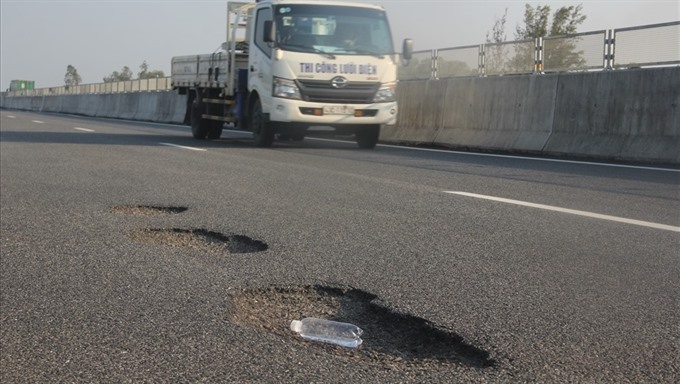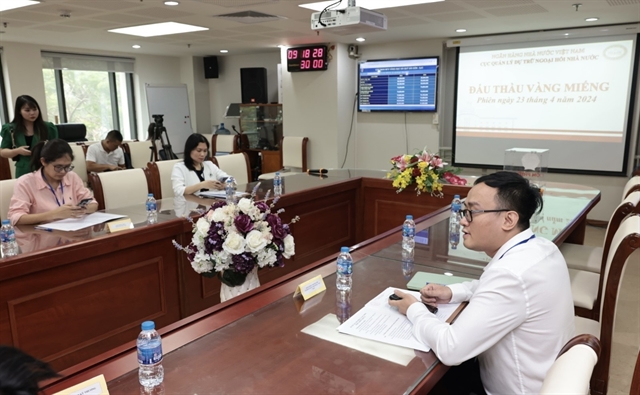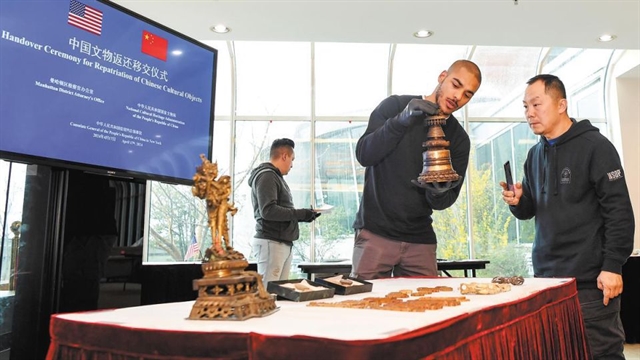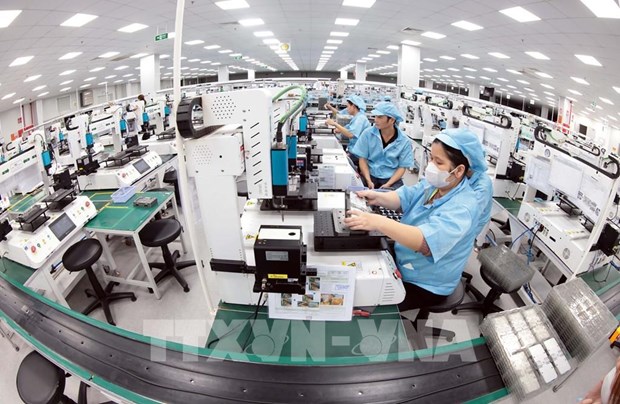 Society
Society

Construction quality of a key expressway in central Việt Nam was questioned as repairs meant to fix road defects that appeared shortly after opening were considered ‘lacklustre patchworks.’
 |
| Many parts of the Đà Nẵng-Quảng Ngãi Expressway in central Việt Nam developed potholes. — VNA/VNS Phtoo |
HÀ NỘI — Repairs meant to fill in potholes and fix other problems on a key expressway in central Việt Nam have been slammed as lacklustre patchworks.
The 140km four-lane Đà Nẵng-Quảng Ngãi project, built over five years with a total cost of VNĐ 34.5 trillion (US$1.47 billion), was opened to traffic in early September.
A short time afterwards, reports of potholes, asphalt peeling and waterlogging, especially on the Đà Nẵng-Tam Kỳ (Quảng Nam) stretch, quickly emerged.
The investor’s haphazard fixes did little to improve the situation and complaints of defects kept mounting until the transport ministry had to step in early October and demanded correction measures.
The main investor, State-run Việt Nam Expressway Corporation (VEC), told the transport ministry on October 11 that the road had been completely mended and blamed the problems on inclement weather.
However, the concrete and asphalt mixture used to patch the potholes disintegrated and could easily be removed by hand, leaving rainwater-filled holes on the road, according to Vietnam News Agency.
Construction workers were also filmed by Vietnam News Agency using only hand tools, without any specialised machinery, to repair the potholes, again raising doubts over the investor and contractor’s resolve to address the persistent issues.
Trần Văn Tám, director-general of VEC, said there were about 15 similar defects on the Đà Nẵng-Tam Kỳ section. With the pothole’s radius averaging 20cm, the total area of defects on the section came to 70sq.m out of 3.1million sq.m, the total road surface.
VEC claimed that prolonged rain made it impossible to carry out “two-step treatment” that delivers more permanent results than the temporary solution they had used to ensure safe traffic along the expressway that allows for speeds up to 120km/h.
The company said thorough repairs would only take one to two days “under optimal conditions” and pledged to finish the work before October 17 at the earliest.
VEC said since it’s still in the warranty period, the Vietnamese contractors would assume responsibility for the road defects and bear the full costs of maintenance.
During October 13’s surprise inspection of the Đà Nẵng-Tam Kỳ section that was built with Japanese official development aid under the consultancy of a Japanese-Australian venture, deputy minister Lê Đình Thọ said “the expressway indeed has issues” given how the road just went into operation for a month.
He said the defects were caused by low-grade construction quality and authorities were investigating the causes and looking for culprits, but assured the problems are “local, and not widespread on the whole stretch.”
“The transport ministry can attest to the general quality of the project. The issue here, however, is that the way the investor and the expressway management board dealt with the road defects was untimely, irresponsible and not consistent with the transport ministry’s directions, which ultimately drew public ire,” Thọ said, demanding that the road quality should not be affected whether it shines or rains.
Previously, transport minister Nguyễn Văn Thể issued a decision demanding a halt on toll collection on the whole expressway from October 12 until the defects are corrected.
The ministry would only allow toll collection to resume once it’s satisfied with the repairs.
Earlier today, transport minister Thể signed another document, harshly criticising VEC’s negligence and inadequate repair works.
“The contractor must mobilise all necessary specialised machinery, equipment and materials; arrange for barriers and guards and direct the traffic to ensure the safety of the maintenance workers and of the drivers,” the document said.
Chinese contractor
In a related issue, responding to concerns over Chinese contractors’ works on the Tam Kỳ-Quảng Ngãi section using World Bank funds, deputy minister Thọ said Jiangsu company was awarded the contract as they were the lowest bidder in open international bidding.
“The construction works followed regulations and guidelines, under the stringent supervision of independent watchdogs,” he said.
He also dismissed the allegation that mud, instead of concrete, was used to make the roadbed.
“The project involves foreign and independent consultants, if the materials are sub-par, the contractor would be asked to redo the whole road section in the final review,” Thọ said. — VNS









